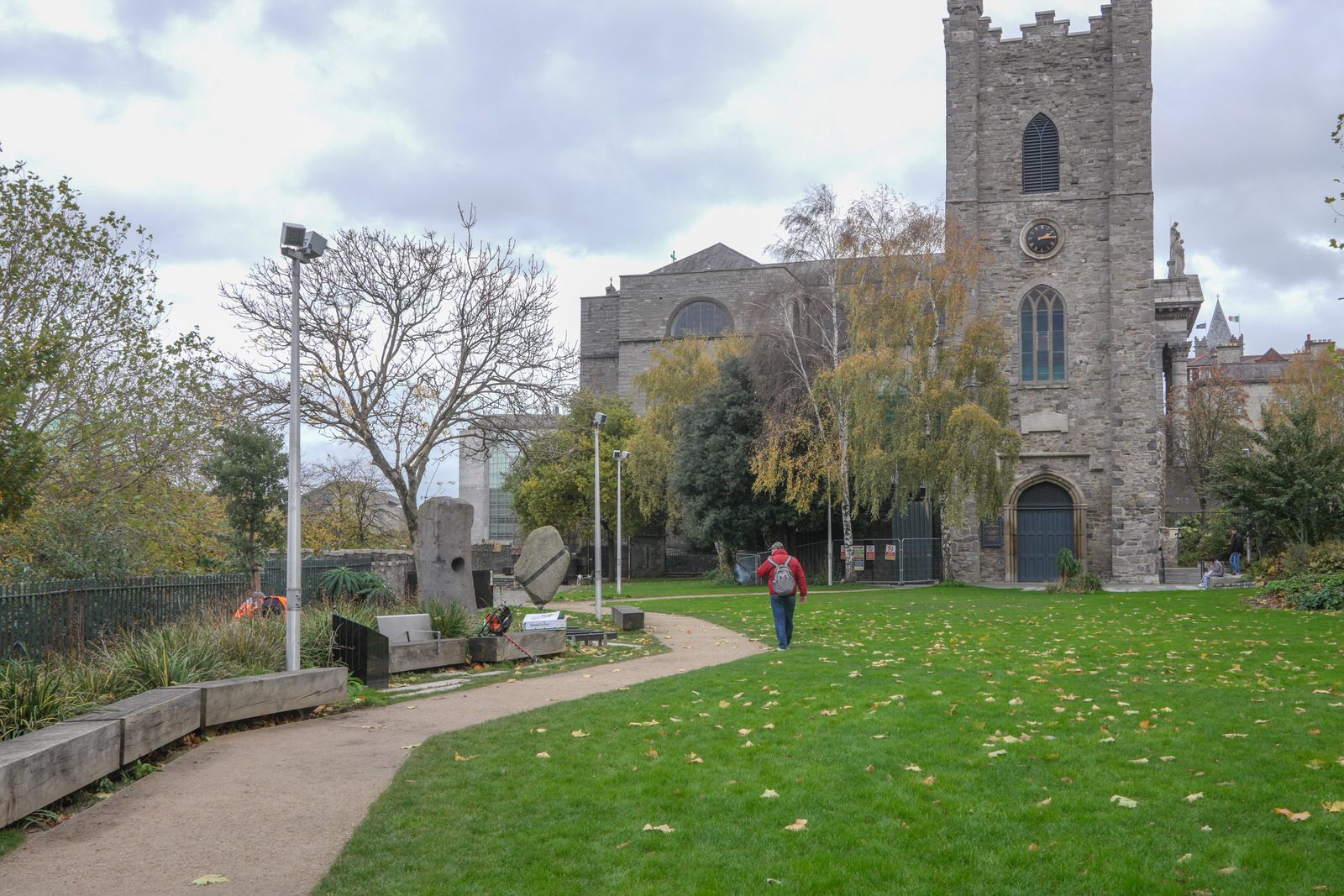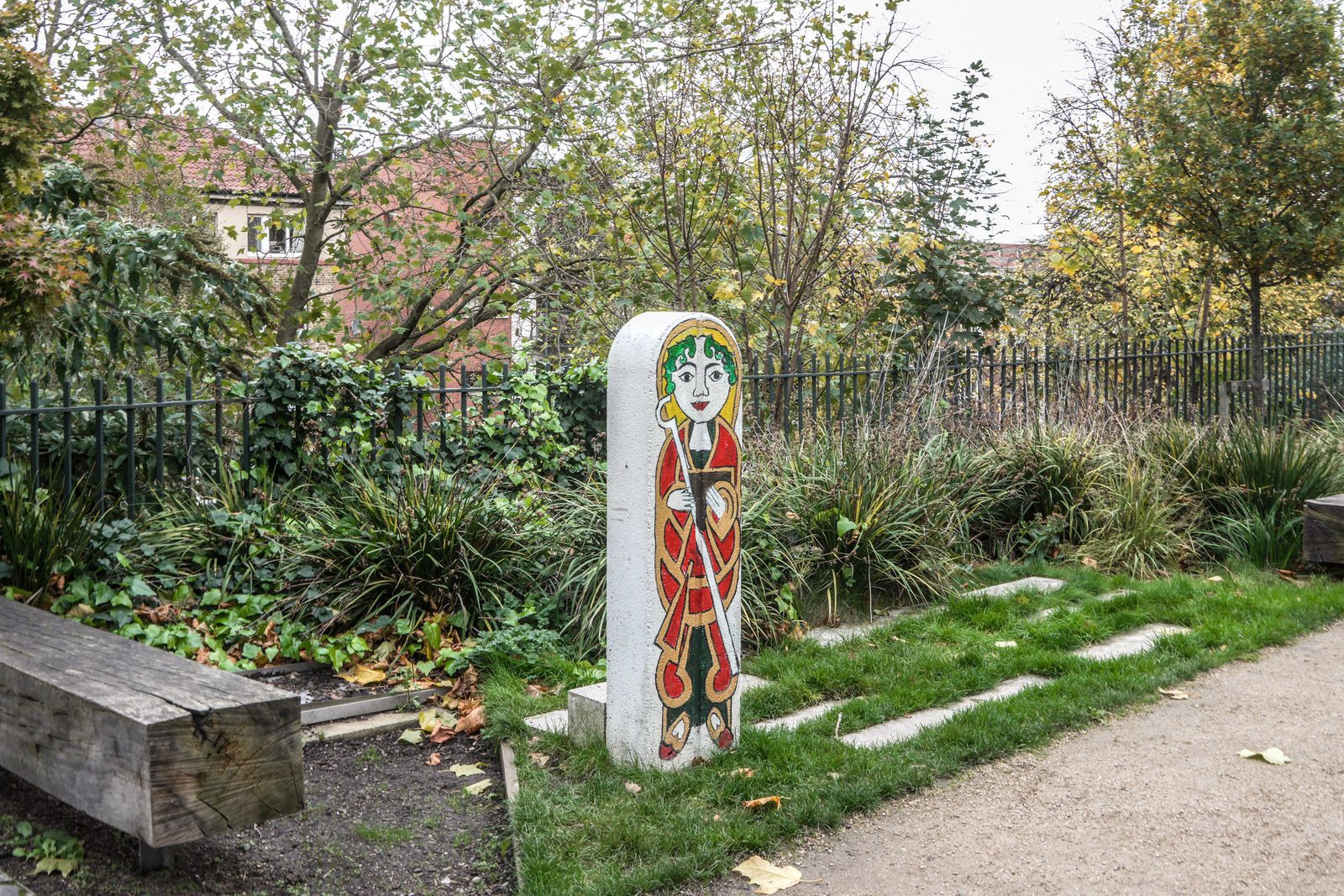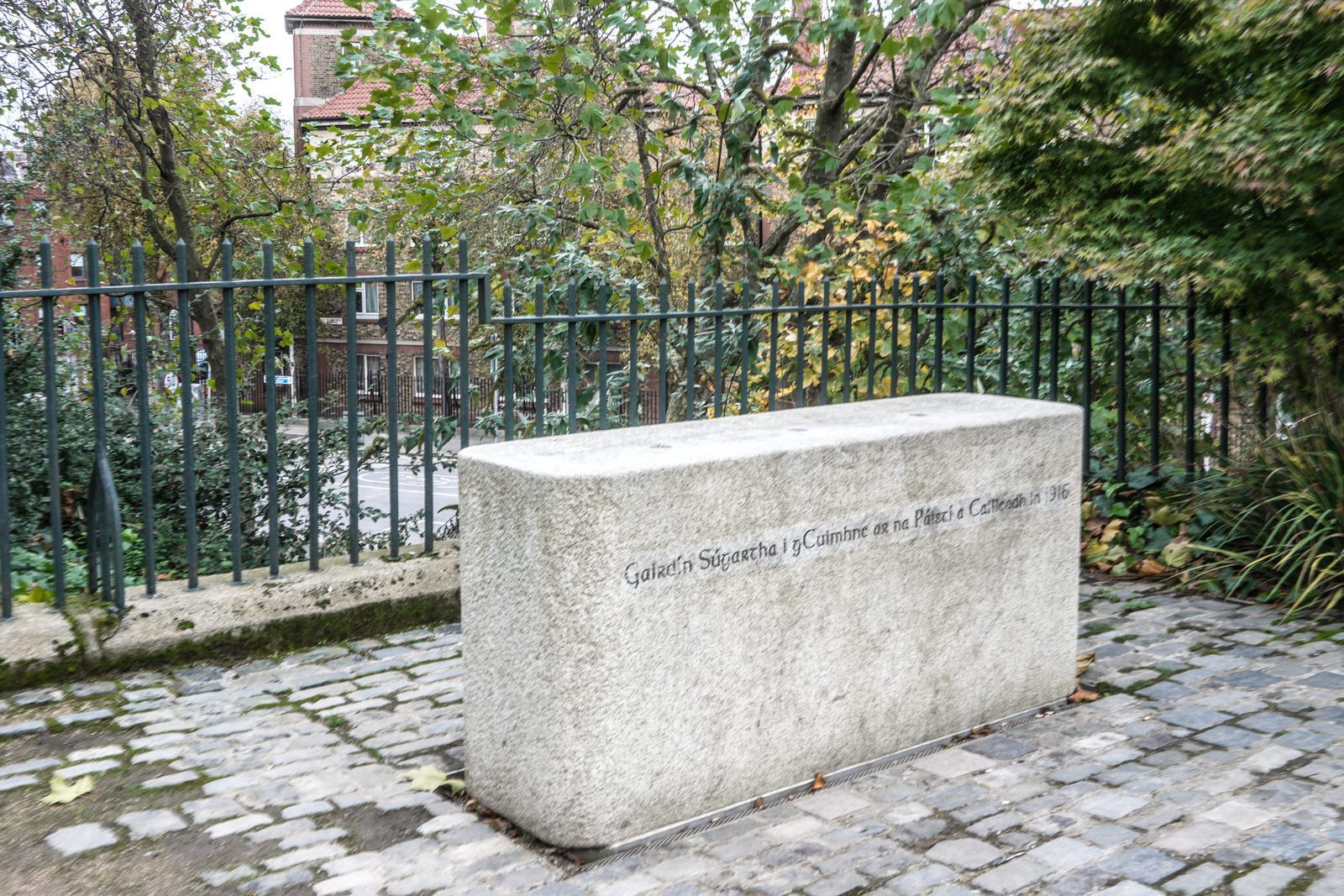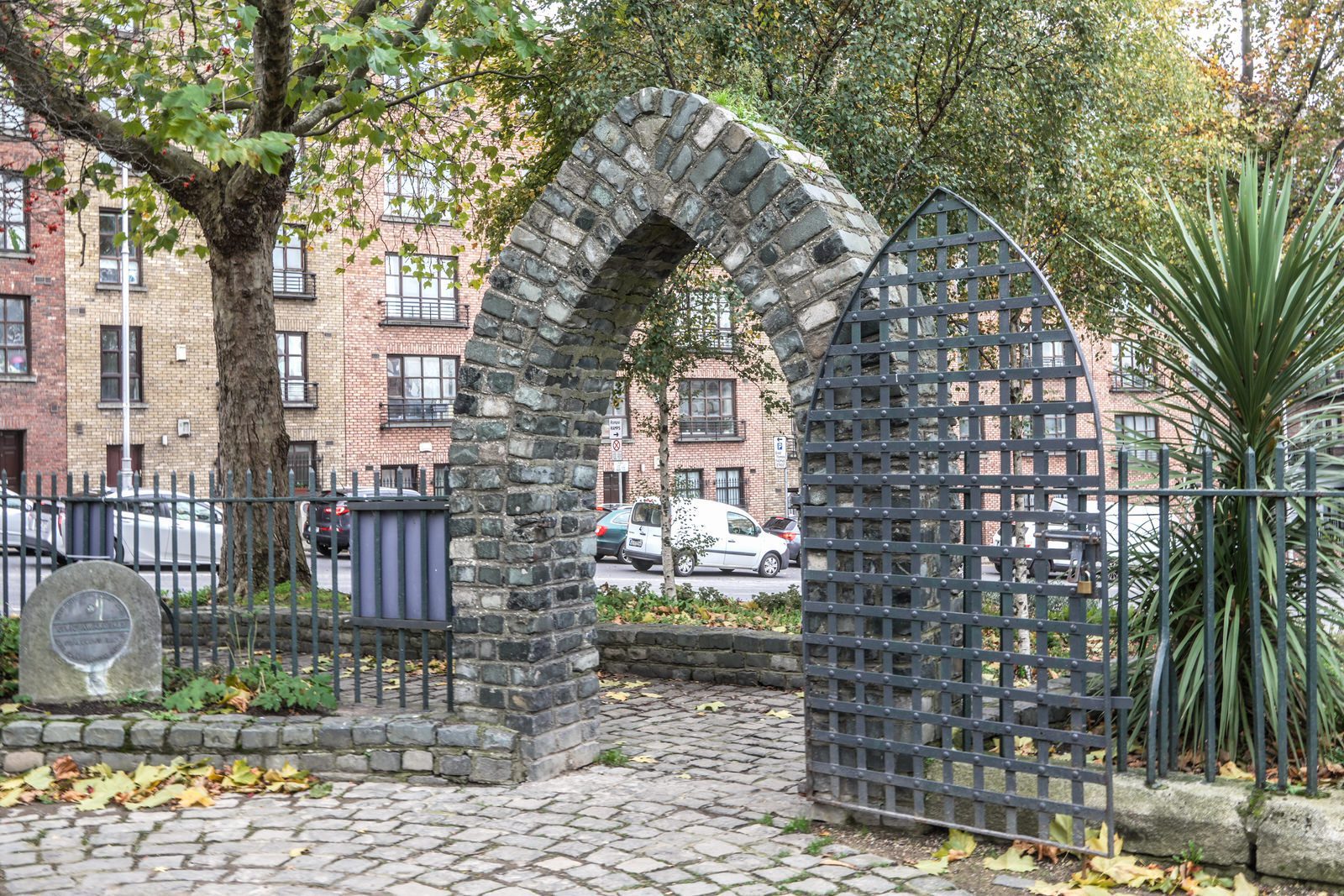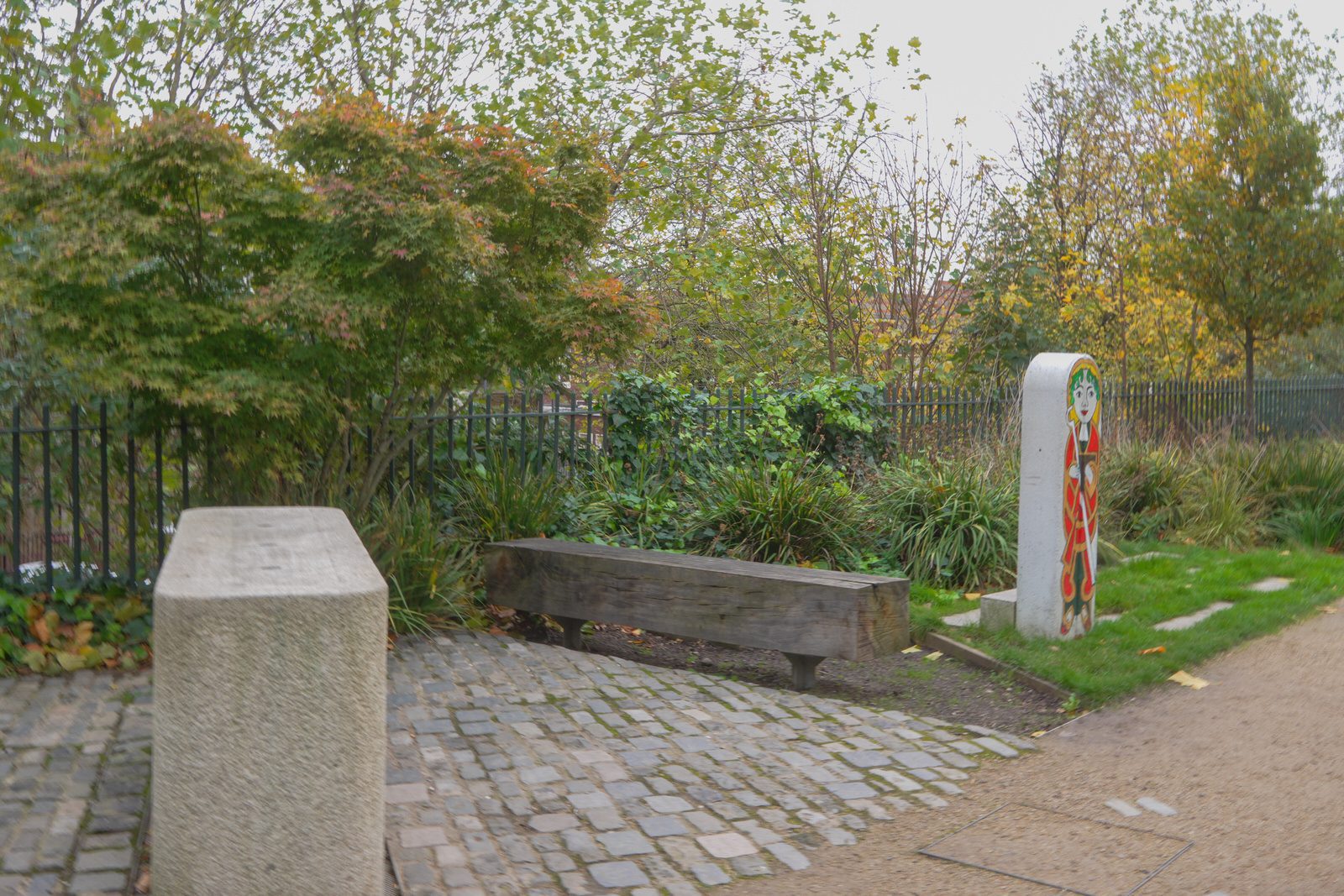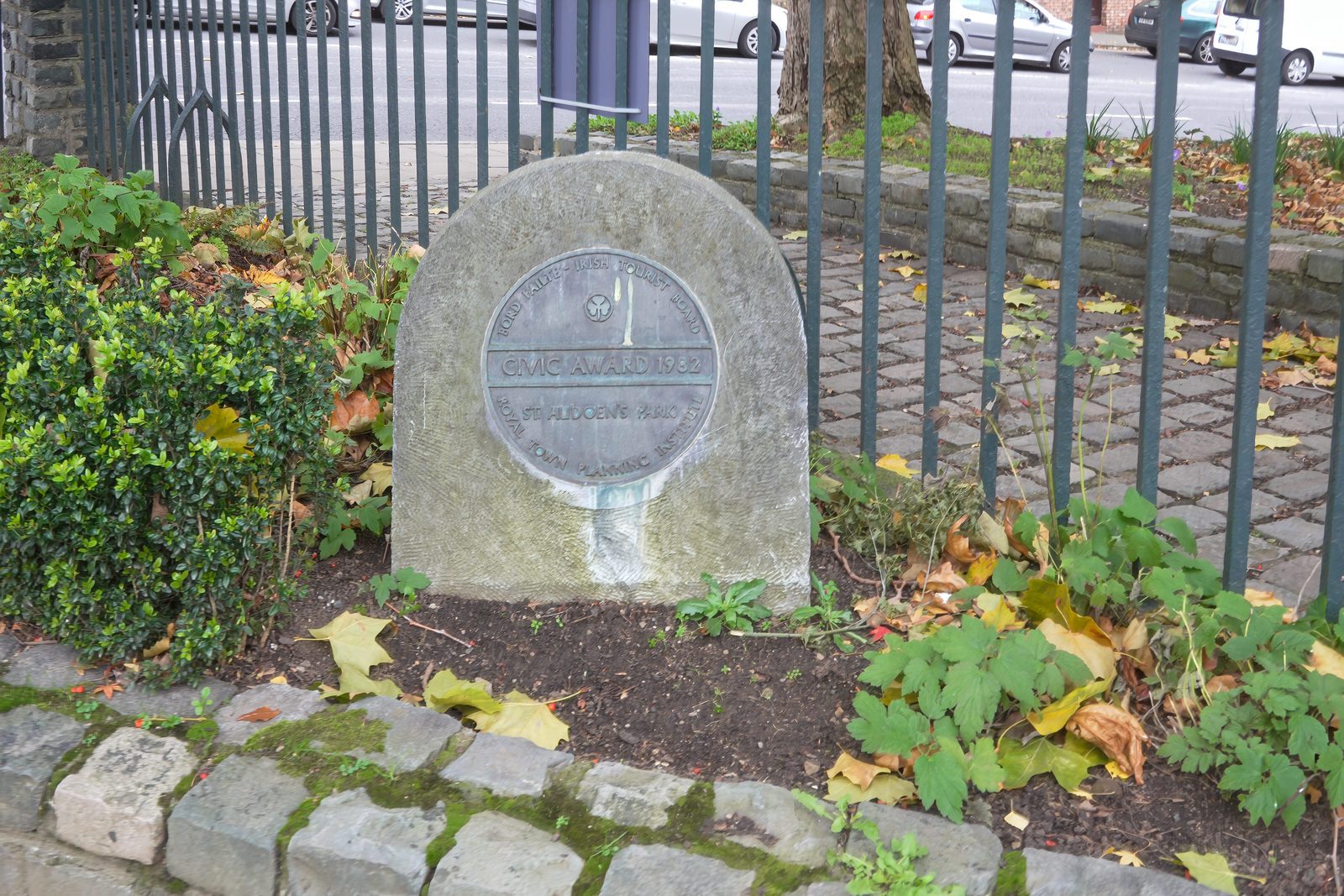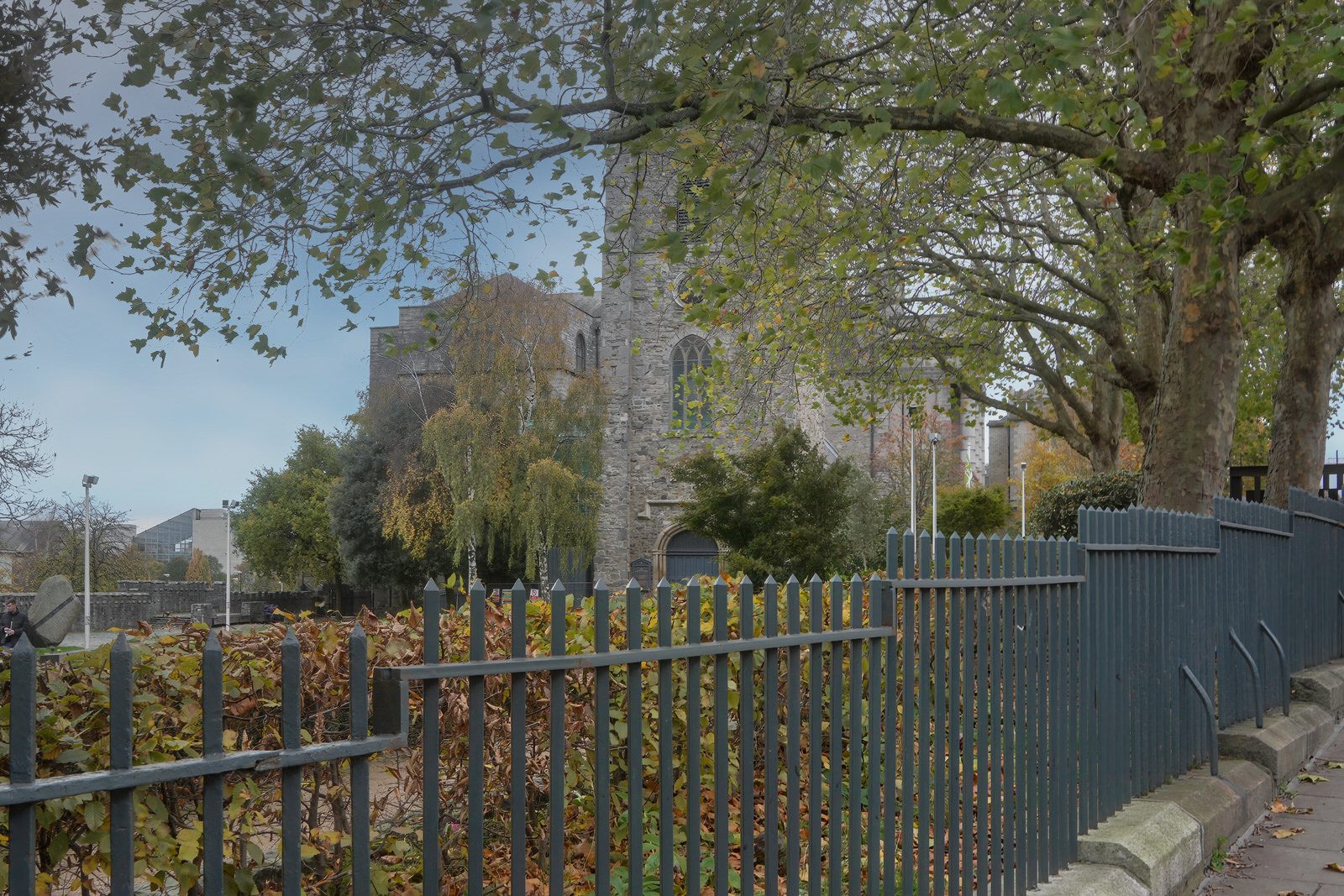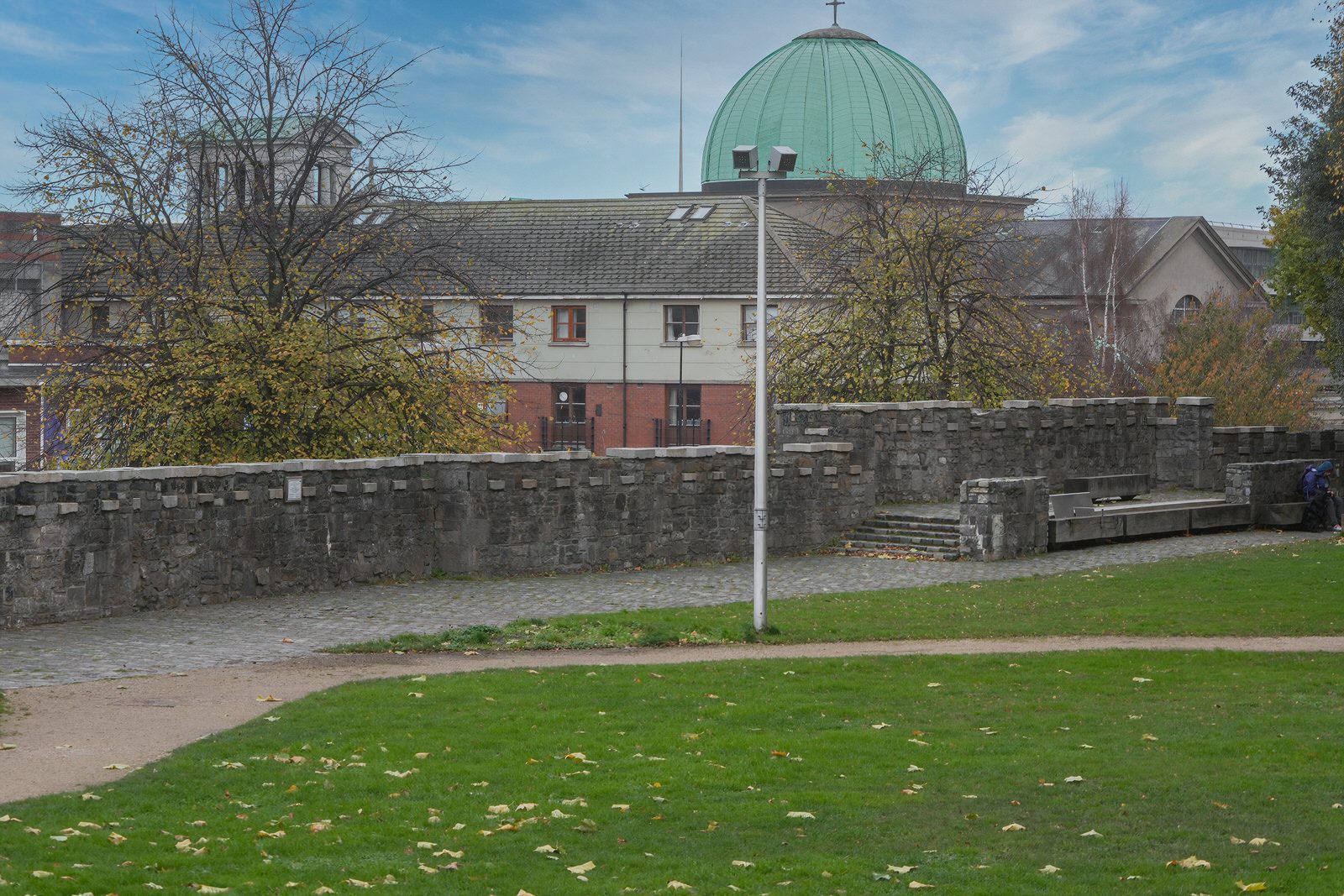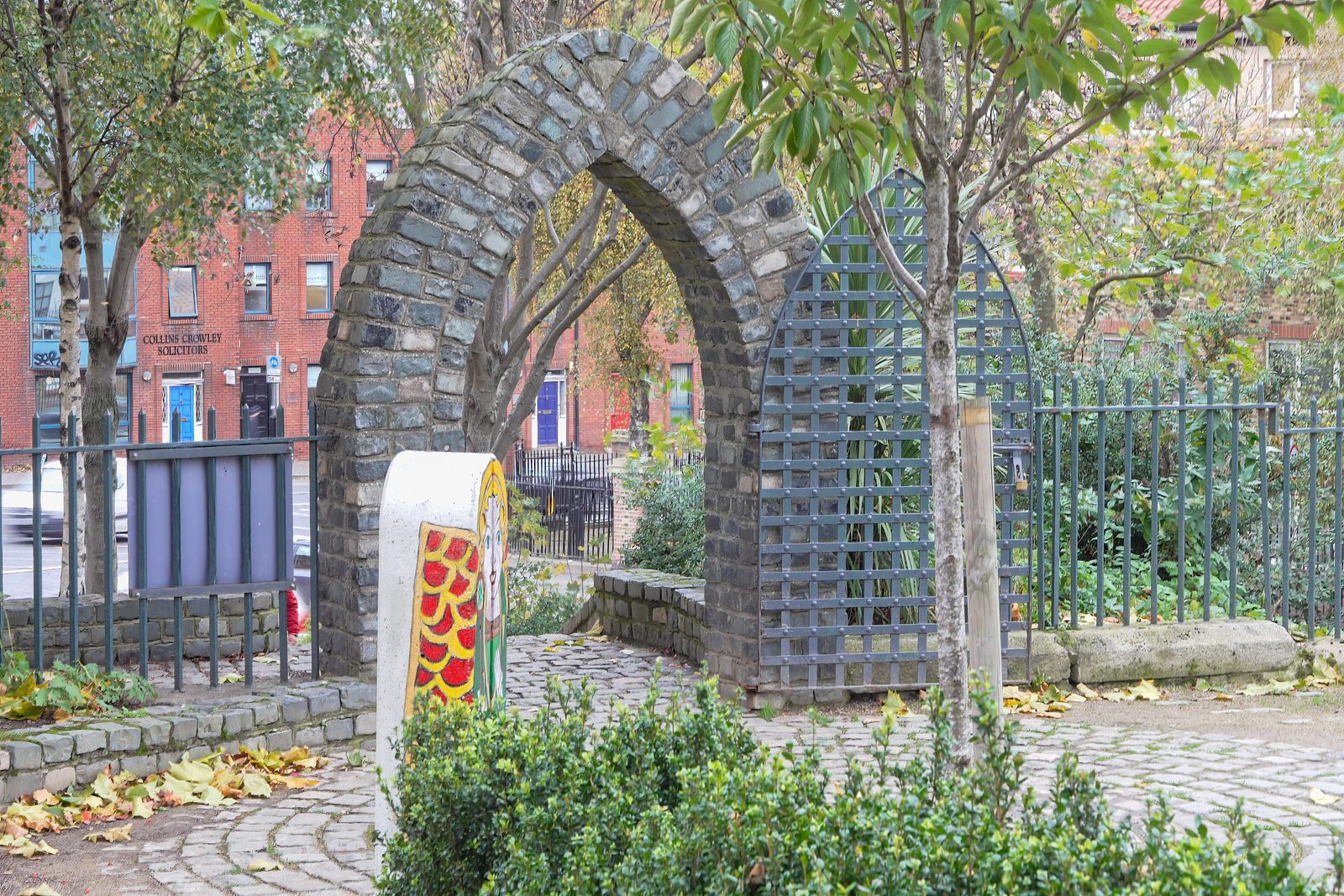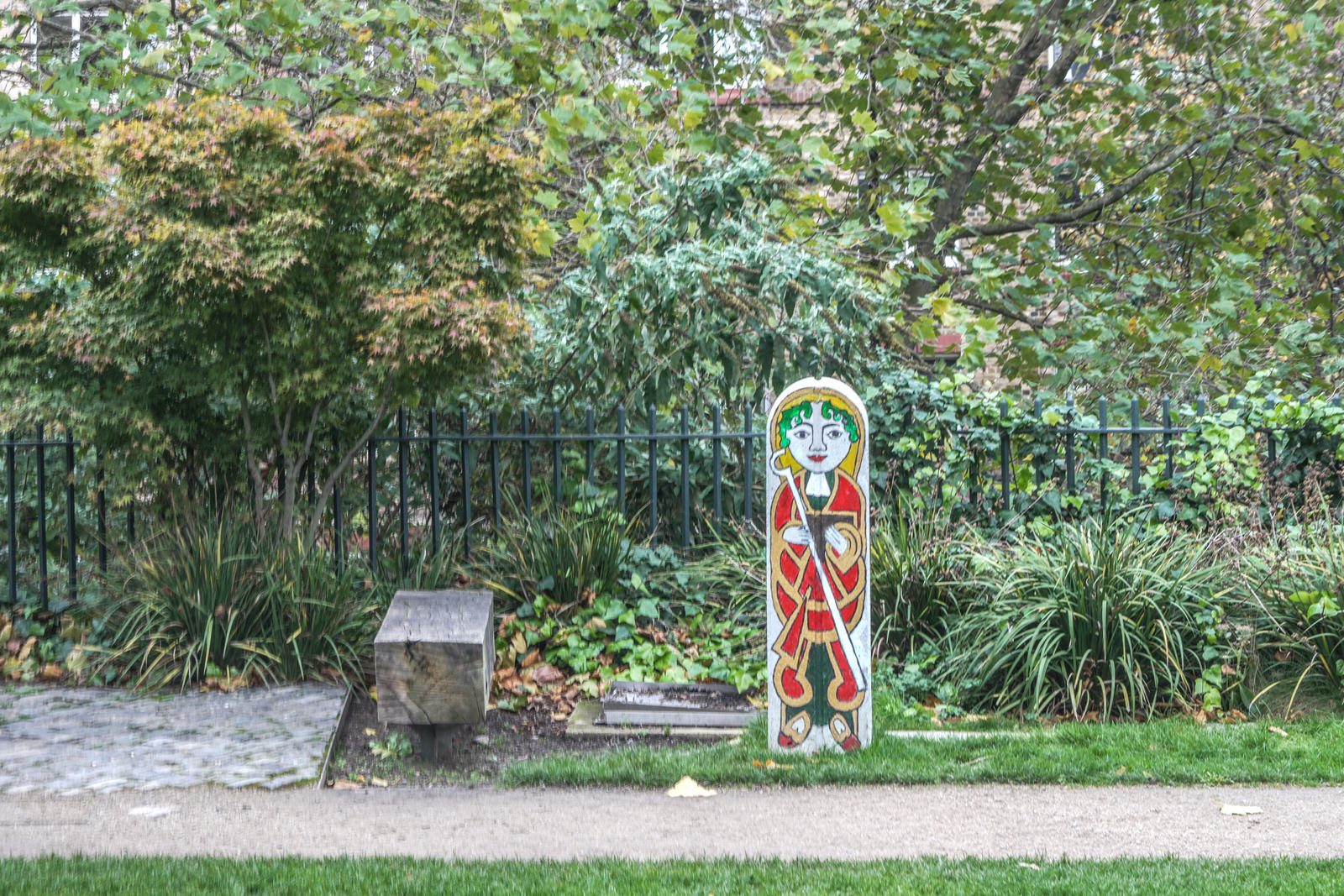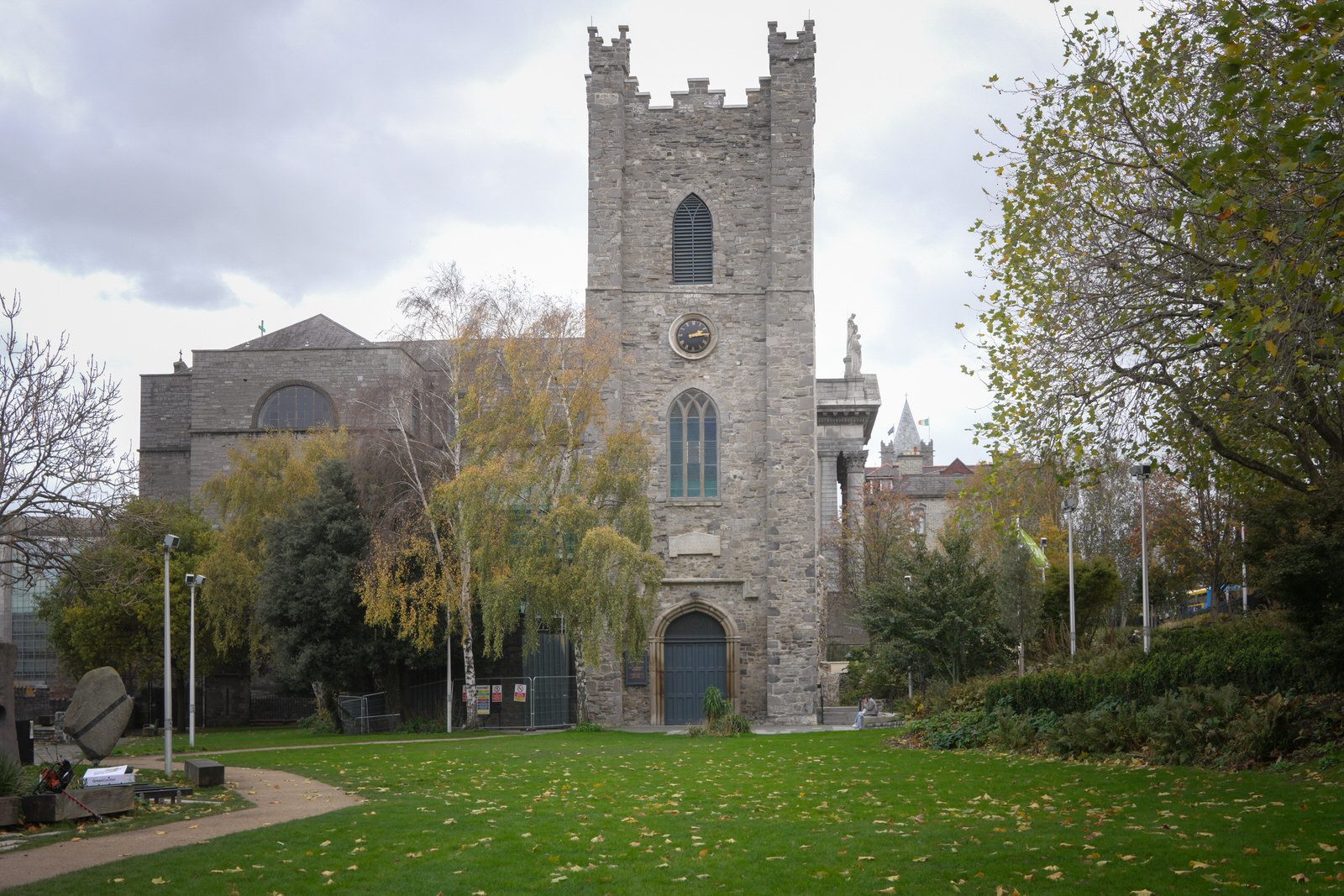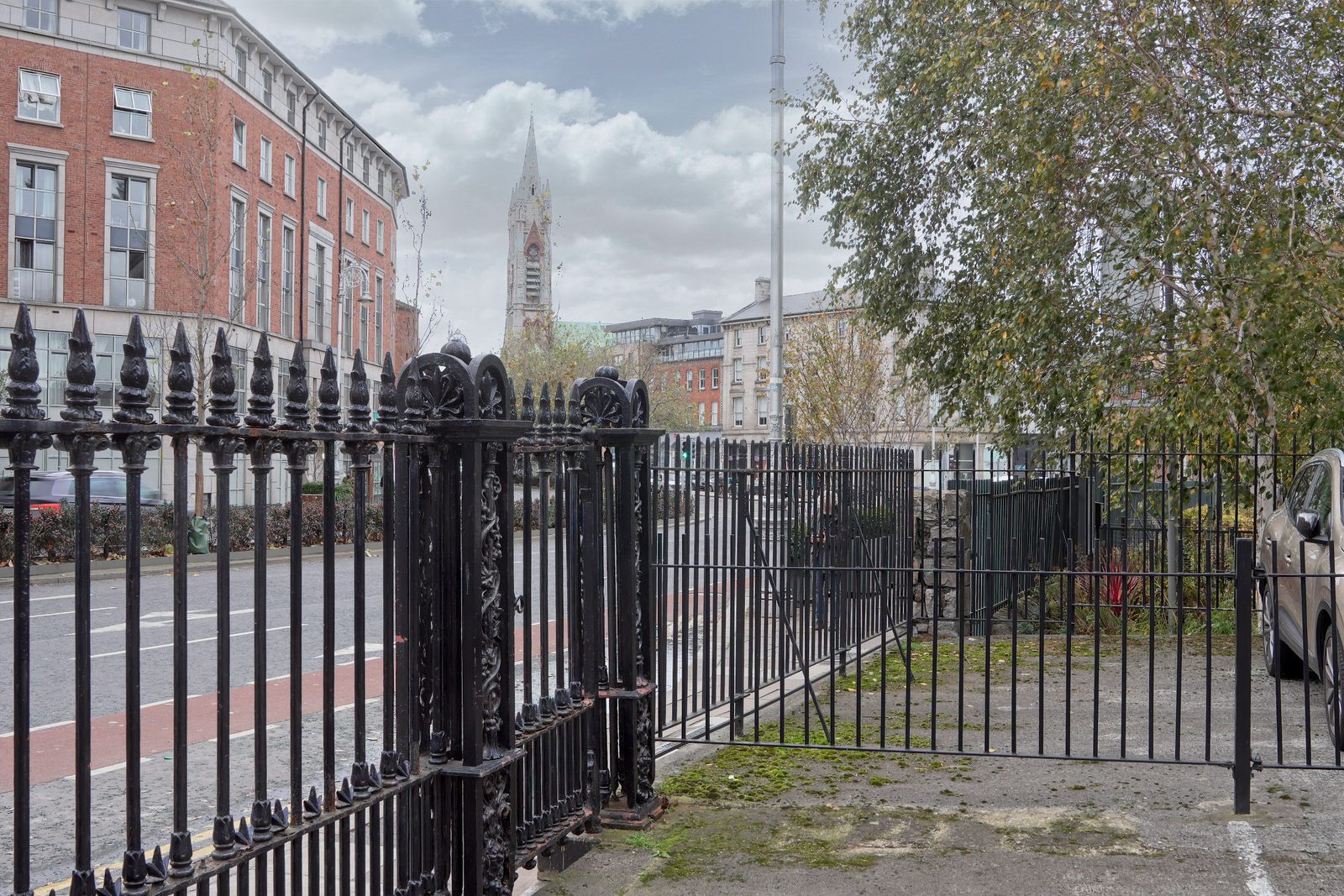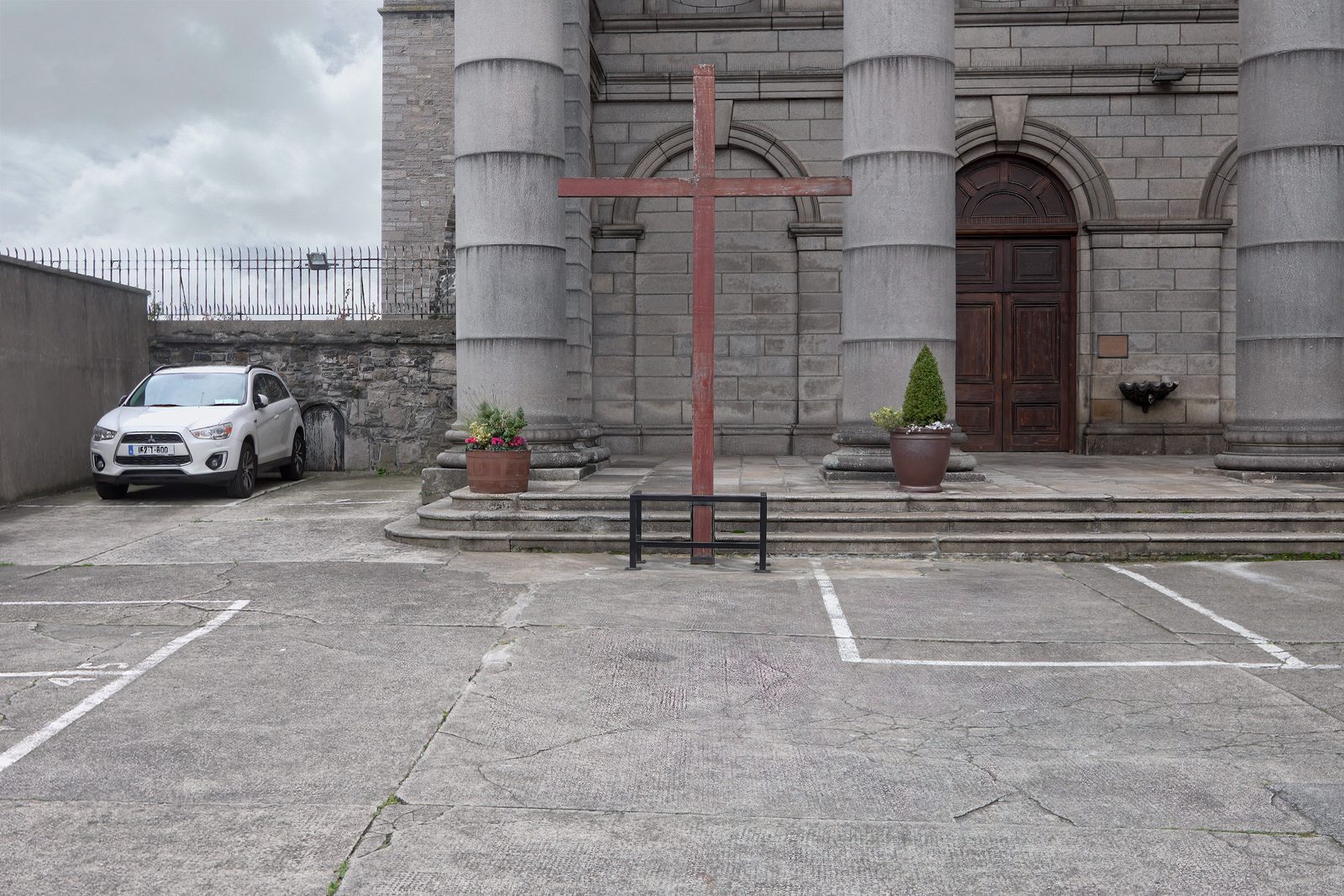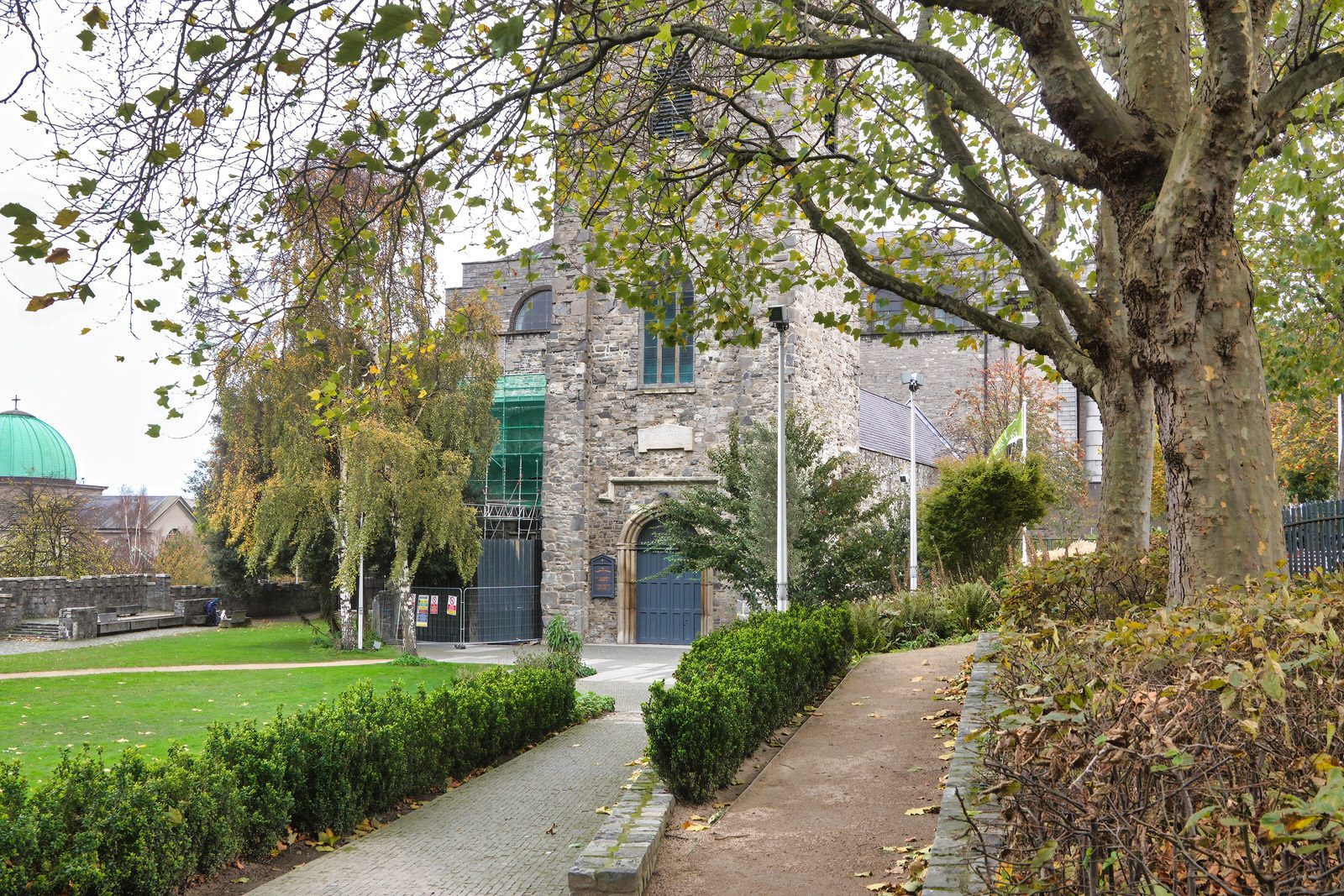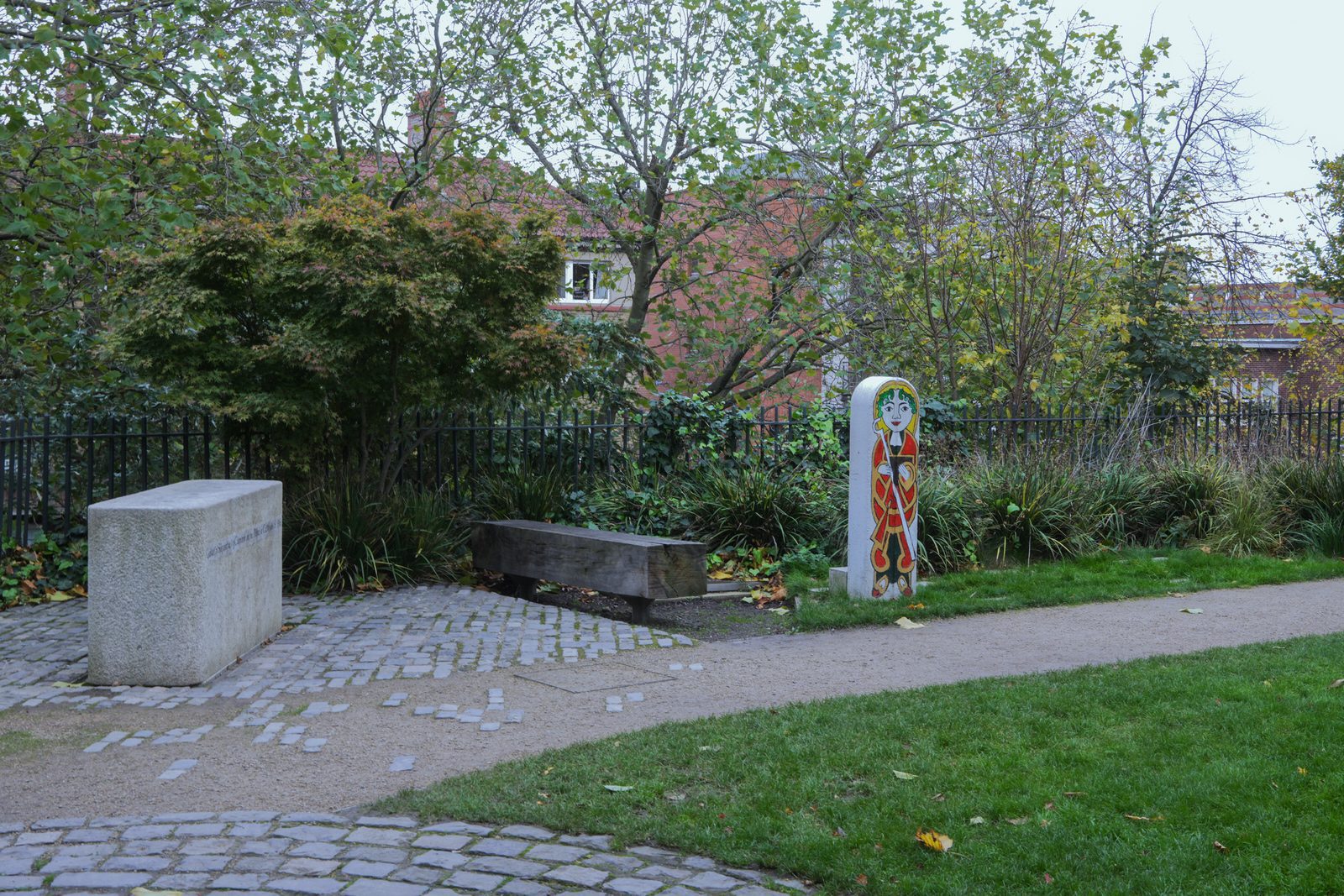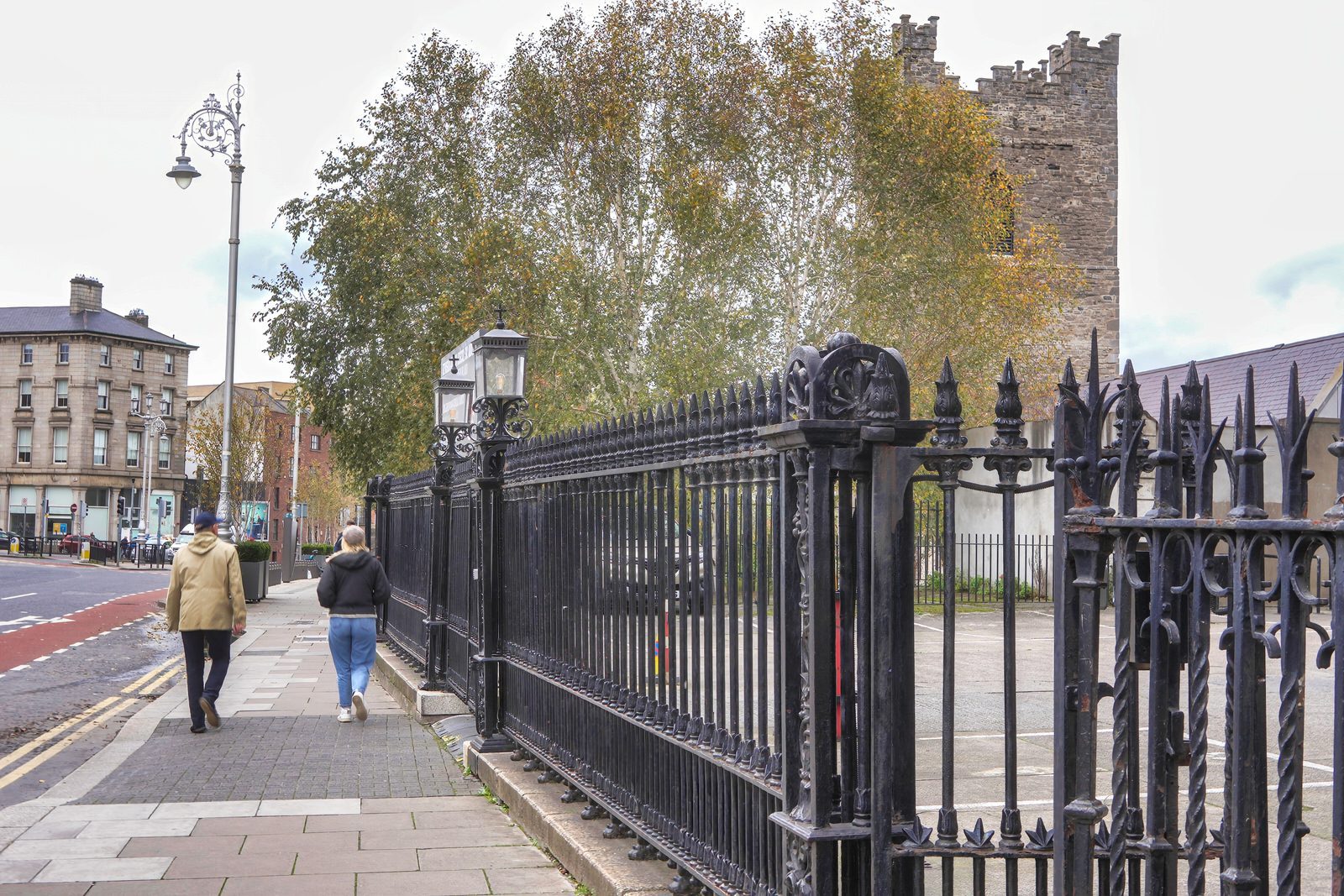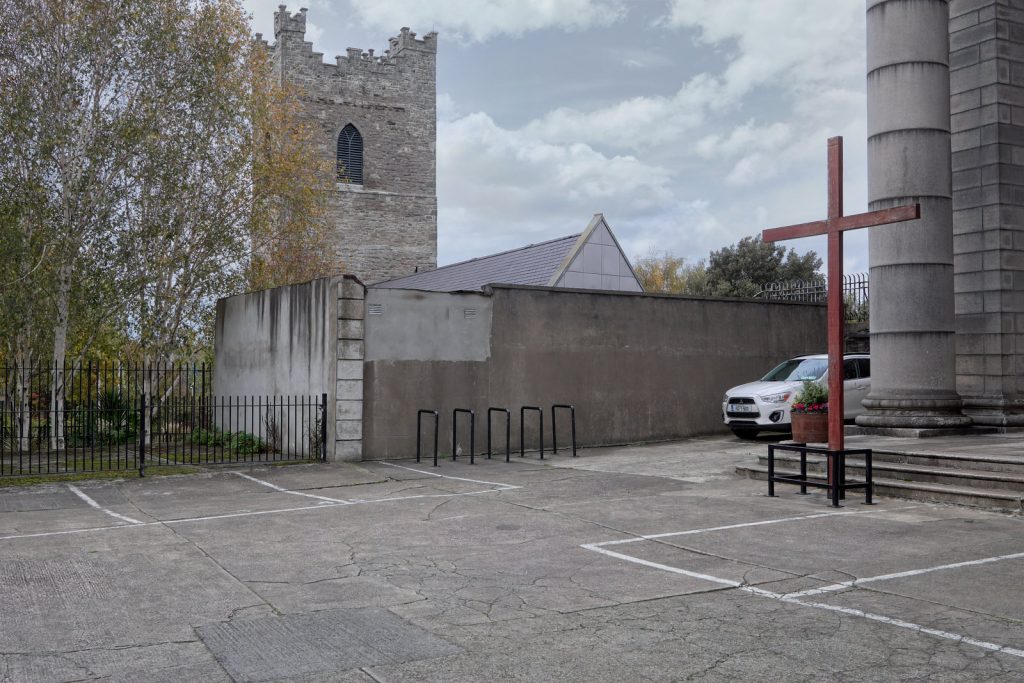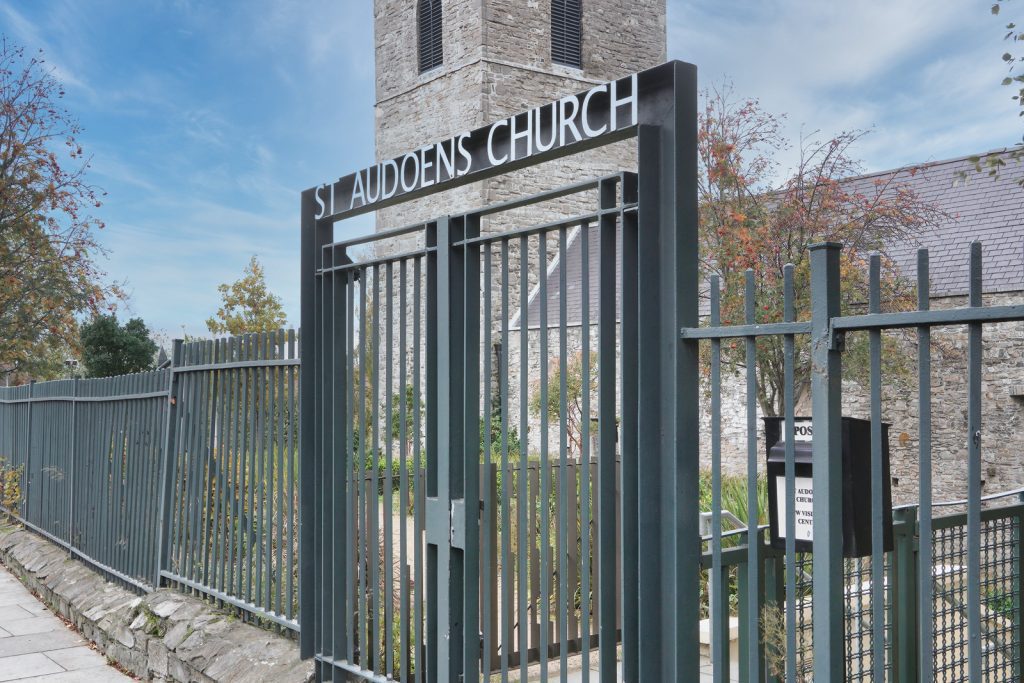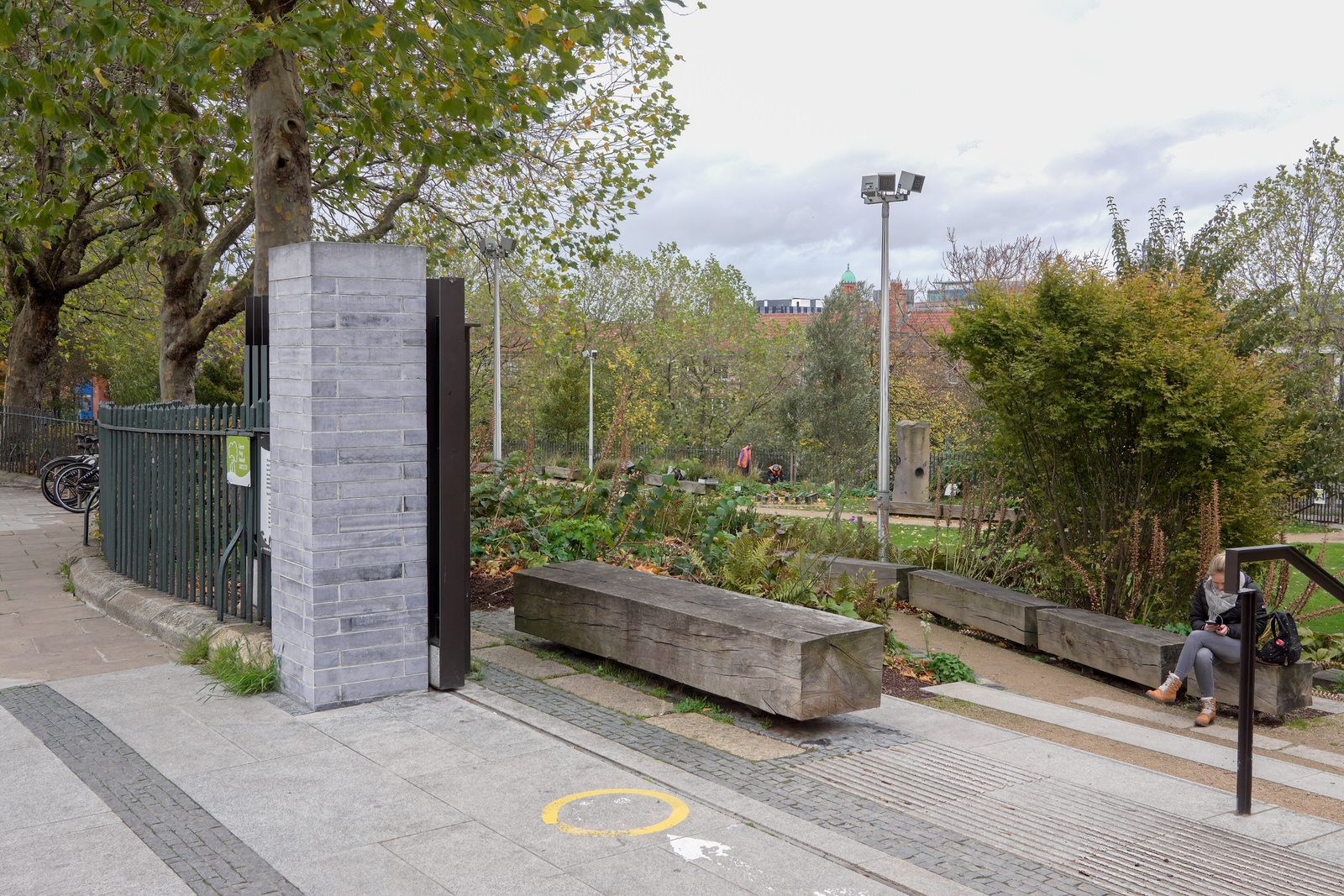ST AUDOEN’S
St Audoen’s park was closed to the public for a number of years but it was reopened in March 2019.
I was surprised to learn that the park is fairly recent as it first opened in the 1980s and it also surprised me to learn that the nearby church is still active.
The main set of steps leads to a new forecourt area in front of the West Door of St Audoen’s Church. A number of archaeological features, uncovered by the works, have been incorporated into the paths through the park including stone setts of a former laneway that ran through the area called Keysers Lane, medieval cobbles and some Georgian-era paving tiles.
The park now includes a series of interactive sound-based installations for children, as well as a new memorial water feature, recalling the children who lost their lives during the Easter Rising 1916.
St. Audoen’s Park is significant in historical terms. Located adjacent to St. Audoen’s Church (1300 A.D.), it incorporates the first stone city wall dating from about 1100 A.D.; St. Audoen’s Arch, the last surviving entrance to the old city; and Fagan’s Gate.
The City Wall was restored in 1976 as part of Architectural Heritage Year and the park development of 1982 won a prestigious civic award. Audoen was a 7th – century Bishop of Rouen (France) and the nearby church named after him is reputedly one of the oldest still used for regular religious services.
St Audoen’s Church (Church Of Ireland) is the church of the parish of Saint Audoen in the Church of Ireland, located south of the River Liffey at Cornmarket in Dublin, Ireland. This was close to the centre of the medieval city. The parish is in the Diocese of Dublin and Glendalough. St Audoen’s is the oldest parish church in Dublin and is still used as such. There is a Roman Catholic church of the same name adjacent to it.
The architect Thomas Drew was the first to draw serious attention to the importance of the church, architecturally and historically, in 1866. He produced detailed plans of the church for which he won an award from the Royal Institute of Architects of Ireland, carried out excavations and drew up a paper on the church and its history. In a booklet published in 1873, the rector Alexander Leeper urged reroofing and restoration of the church.
In the 1980s an extensive restoration of the tower and bells was carried out. A few years later St Anne’s chapel, which had lost its roof and many monuments, was re-roofed and converted to a visitor reception centre, which included an exhibition on the history of the church.
During conservation works starting in 1996 an extensive excavation of a small section of the church was carried out, which cast new light on the early days of the church. This contributed greatly to an understanding of the building history of the church. The detailed results of this study were published in book form in 2006.
St Audoen’s (Catholic) is the church of the parish of St Audoen that is located south of the River Liffey at Cornmarket in Dublin, Ireland. The parish is in the Roman Catholic Archdiocese of Dublin. The church is now home to the Polish chaplaincy in Ireland. There is an Anglican church of the same name adjacent to it. The church was built between 1841 and 1847 to the neoclassical design of Patrick Byrne who also designed nearby St. Paul’s Church on Arran Quay and Church of the Immaculate Conception (Adam and Eve’s) on Merchants Quay. The cornerstone was laid in July 1841. A founding member donor being Daniel O’Connell.
St. Audoen’s houses the National Shrine of St. Anne. The site on which the church is built formerly housed a college to accommodate the chaplains to the Guild of St Anne’s, originally known as Blakeney Inns and later St. Anne’s Inns. The statue of St. Anne was made by Deghini’s of Fishamble Street, Dublin, and was donated by a Mrs. Kelly in 1919.
A central dome positioned over the crossing of the nave was the main external feature of the church until it collapsed in 1880 and was replaced with a flat roof. It has a double-level crypt to compensate for the steeply sloping site. In 1898 the portico including the piazza to the front and railings was added by George Ashlin. The pediment over portico has a granite frieze supported on granite Corinthian columns. Like the earlier St. Paul’s, above the pediment are carved statues at each end and at the apex.
The walls are constructed of Black calp and are best appreciated from Cook Street from where their sheer bulk dominates the area and the Medieval Dublin City Walls. Because of its steeply sloping site, the church has a double level crypt to the rear.
The interior, which has a coffered barrel-vaulted ceiling, is lit by lunette windows high above the walls. The statue of Our Lady’s Altar is by Peter Bonanni of Rome, which won a gold medal at the Dublin Exhibition in 1853.
The holy water stoups on either side of the main doors are giant clam shells that were donated in 1917 by a Pacific Ocean sea captain as a gift to his brother, the parish priest at the time.
Until December 2007 the church hosted a regular Tridentine (Latin) Mass. The church has experienced a resurgence of attendance due to the influx of Polish immigrants who regularly celebrate mass in the church in their native language. St Audoen’s Church is now home to the Polish chaplaincy in Ireland.
